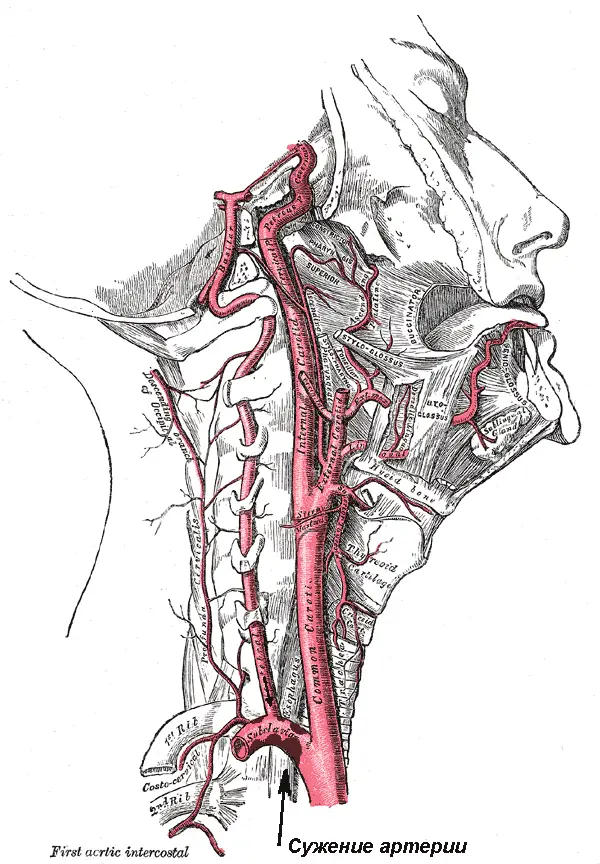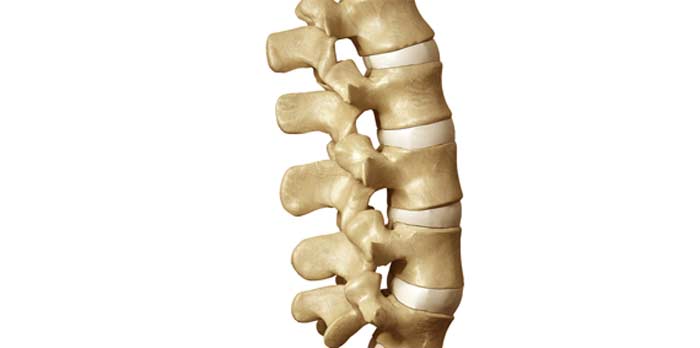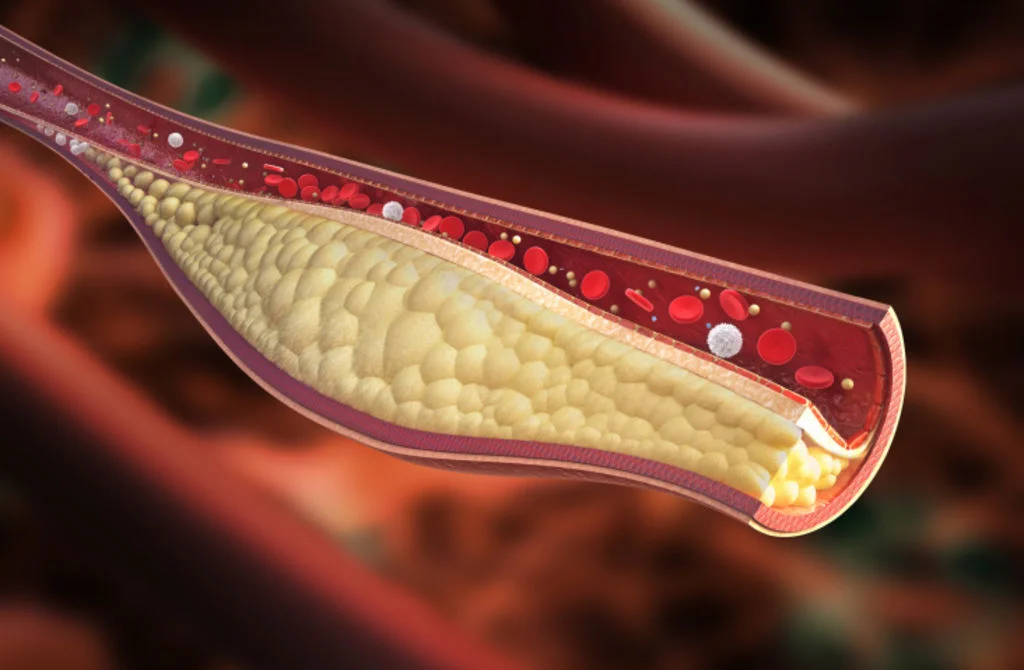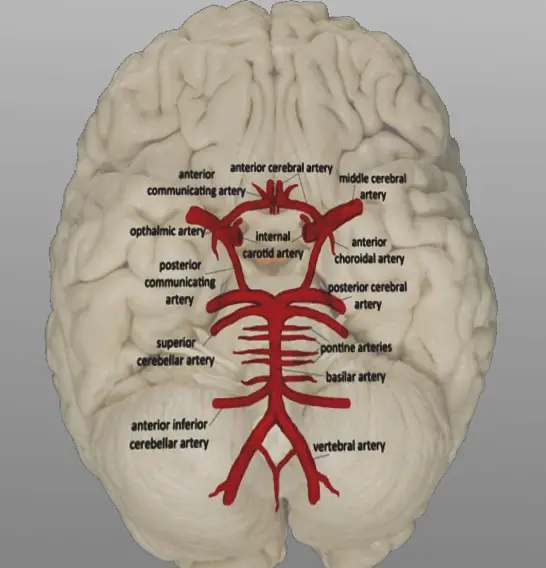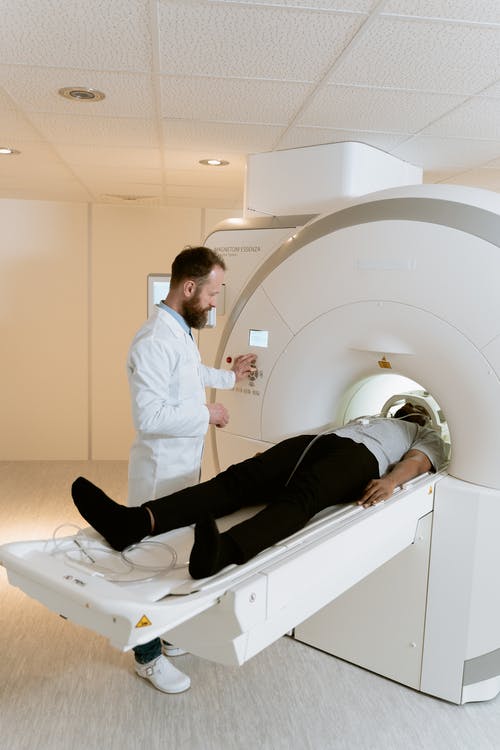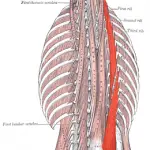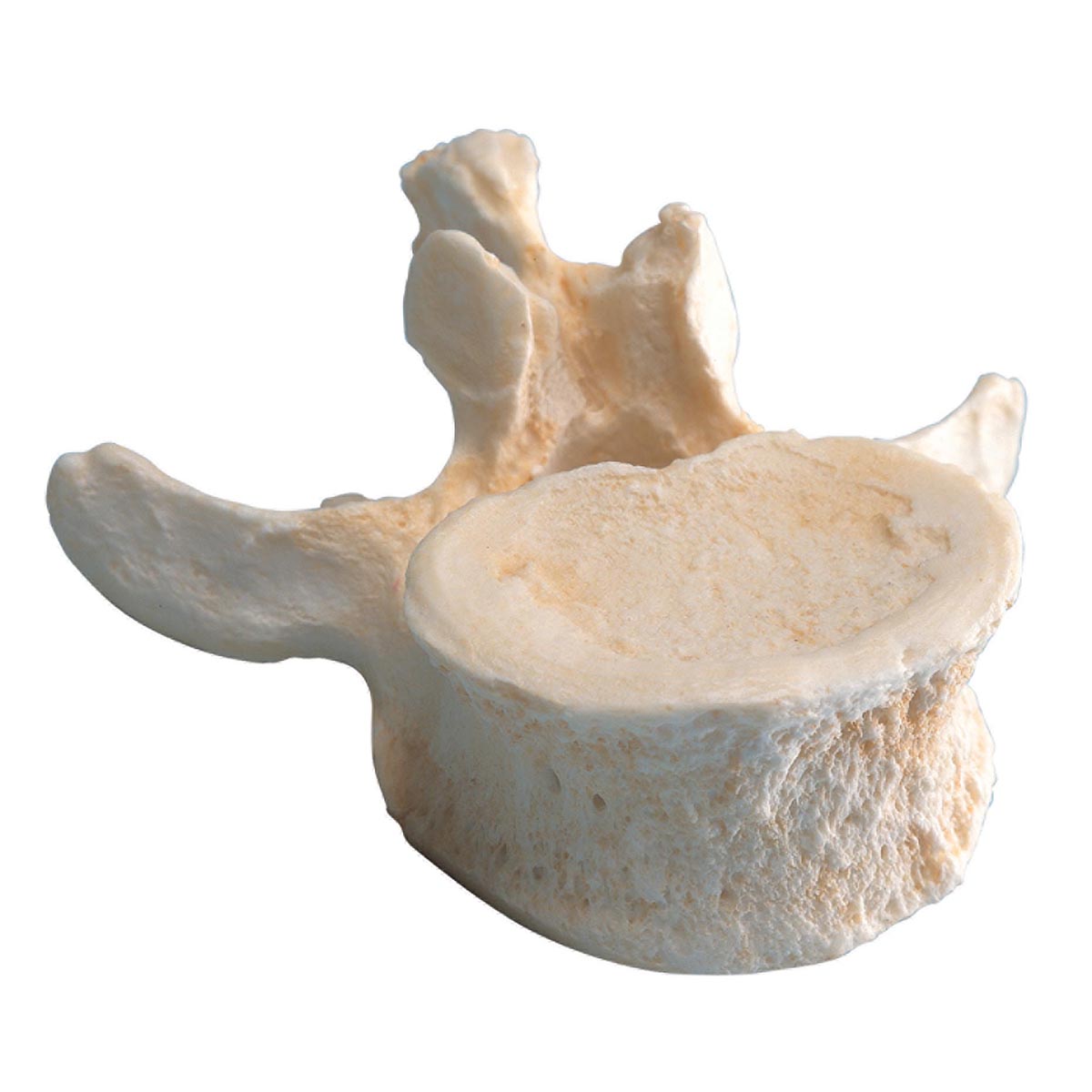Article reviewed and approved by Dr. Ibtissama Boukas, physician specializing in family medicine
Cells and organs need a contribution in nutrients and oxygen to function properly. This nutrient contribution is essentially made by through blood circulation, in particular by the arteries. There are different types. In this article, let's talk about thevertebral artery and related disorders.
Vertebral Artery Definition
The vertebral artery is a systemic artery whose role is to transport oxygenated blood to the brain. Located between the longus muscle of the neck and the anterior scalene muscle, it is responsible for the hindbrain vasculature, cerebellum, thump cerebral and bone marrow cervical spinal.
Vertebral Artery Anatomy
The body has two vertebral arteries: the left vertebral artery et the right vertebral artery. They are medium caliber arteries, 3 to 4 mm in diameter. If the one on the left walks in the left part of the neck, the one on the right walks in the right part.
The vertebral artery originates on the superior aspect of the trunk of the ipsilateral subclavian artery. It forms the first collateral branch of this artery.
Its path consists of going up and passing through the neck to reach the head. To do this, it must:
- cross the stellate ganglion (cervicothoracic sympathetic ganglion);
- penetrate into the transverse channel formed by the stacking of vertebrae cervical;
- reach the level of the sixth transverse;
- climb up to the atlas (C1);
- circumvent the lateral masses of the atlas;
- cross the foramen magnum (occipital hole);
- join the anterior surface of the medulla oblongata.
Arrival at the level of the brainstem, it finds the opposite vertebral artery. The two come together to form the basilar trunk (Intergovernmental Panel on Climate Change) and the basilar artery. During this journey, the vertebral artery divides into different branches. Here are the most important:
- the dorso-spinal branches which form at the level of the cervical vertebrae;
- the anterior and posterior spinal arteries that form in the intracranial part.
What are vertebral artery disorders?
Vertebral artery dissection
The term " dissection refers to a pathology linked to the formation and extension of a hematoma in the wall of the vertebral artery. The caliber of the vessel may become narrowed or elongated. It all depends on the size as well as the position of the hematoma. If you have a narrowing of the artery, the vascularization of the regions of the brain will be reduced, or even stop. Conversely, when it is distended, it can compress structures around it.
La artery dissection vertebral can follow:
- minor trauma;
- weakness of the arterial wall;
- a genetic predisposition;
- cervical manipulations during osteopathic or chiropractic therapy;
- diseases such as fibromuscular dysplasia or collagen disorder.
Hypertension and low blood pressure
La blood pressure indicates the pressure exerted by the blood on the walls of the arteries. It is measured with a tensiometer which gives two values: the systolic pressure and diastolic pressure. Expressed in millimeters of Mercury (mmHg), its normal value is around 120/80 mmHg, i.e. 120 mmHg for systolic and 80 mmHg for diastolic.
If thehypertension blood reflects an abnormal rise in blood pressure in the blood vessels, thelow blood pressure blood refers to the opposite situation.
The causes of high blood pressure are numerous :
- kidney disease;
- repeated emotional shocks;
- smoking;
- too salty diet;
- obesity
On the other hand, low blood pressure can be due to:
- a heart disorder;
- incorrectly dosed antihypertensive treatment;
- an infectious disease;
- a lack of blood after a haemorrhage (hypovolaemia);
- severe dehydration...
Arterial thrombosis
La arterial thrombosis refers to a pathology resulting from the formation of a blood clot in the wall of an artery. This can result in the reduction of the caliber of the artery or in the worst cases, its occlusion.
This disease can be associated with other pathologies such as:
- heart disease;
- diabetes;
- aging (over 75);
- a sedentary lifestyle;
- hypercholesterolemia...
Stroke
Vertebral artery dissection can cause stroke. Although this occurs rarely, it is a common occurrence in young to middle-aged patients. Blockage of an artery can lead to ischemic stroke. On the other hand, the rupture of the vascular wall can cause a hemorrhagic stroke.
High blood pressure and arterial thrombosis are also risk factors for stroke.
What are the symptoms of vertebral artery disorders?
The symptoms of vertebral artery disorders are many.
- For artery dissection: neck pain, numbness, posterior neck pain, occipital headache, diaphoresis (sweating).
- For high blood pressure: visual disturbances, muscle cramps, nosebleeds, headaches, dizziness, dyspnea (breathing difficulty)…
- For hypotension: malaise, extreme fatigue, dizziness, palpitations, weakness, syncope (loss of consciousness)…
- For thrombosis: dizziness, visual disturbances, speech disturbances, transient paralysis, loss of consciousness, etc.
- For a stroke: dizziness, visual disturbances, memory loss, difficulty walking, altered senses, language or comprehension disorders, etc.
How to treat vertebral artery disorders?
Diagnosis of vertebral artery disorders
In case of suspicion of a vertebral artery disorder, you should consult a doctor as soon as possible. The latter will perform a clinical examination to find out about the pain felt. Then, to clarify and confirm his diagnosis, he will carry out various examinations ofmedical imaging such as an X-ray, a scanner, an angioscanner, an MRI, an arteriography, an echo-doppler…
Treatment of vertebral artery disorders
Le treatment of vertebral artery dissection includes anticoagulants (factor Xa inhibitors, danaparoid, vitamin K antagonists, etc.) or antiplatelet agents (clopidogrel, ticlodipine, aspirin + dipyridamole, etc.). While anticoagulants prevent blood clotting, antiplatelet agents prevent platelet adhesion.
We can treat thehypertension with antihypertensives such as alpha 1 blockers, beta blockers, thiazide or hyperkalaemic diuretics, calcium channel blockers, angiotensin converting enzyme (ACE) inhibitors and angiotensin II receptor antagonists (ARA II).
As for arterial hypotension, it can be corrected by various means.
- The medications: fludrocortisone (increases blood flow), midodrine, pyridostigmine.
- La placement of an electrosystolic trainer (pacemaker): if the drugs do not work. It increases the basic heart rate.
- A surgical intervention: whether it is related to head trauma.
La arterial thrombosis is usually cured by thrombolysis. It is a treatment that breaks up blood clots with thrombolytic drugs like urokinase, streptokinase or tissue plasminogen activator and its derivatives.
Le treatment of ischemic stroke combines thrombolytic drugs, anticoagulants or antiplatelet drugs and antispasmodic drugs (for muscle spasms). If necessary, endarterectomy can be performed. It is a surgical procedure that consists of cleaning the inside of a partially or totally blocked blood vessel. Sometimes the doctor may also prescribe angioplasty. This technique aims to prevent the occlusion of the affected artery by placing a balloon there.
As to hemorrhagic stroke treatment, it requires taking antihypertensives and benzodiazepine-type antiepileptics. Surgery may be considered to remove the accumulated blood. And, in the event of an aneurysm, a platinum filament is placed there to correct the dilation of the blood vessel.
Sources
https://www.passeportsante.net/fr/parties-corps/Fiche.aspx?doc=artere-vertebrale
https://www.info-radiologie.ch/dissection-vertebrale.php
https://www.em-consulte.com/article/292285/chirurgie-de-l-artere-vertebrale

